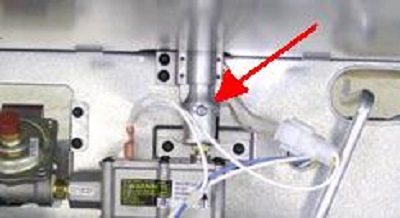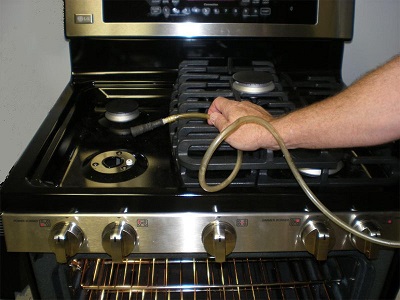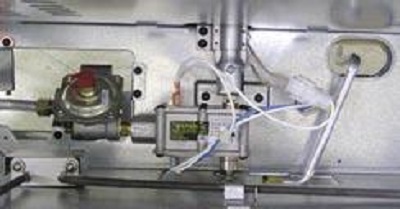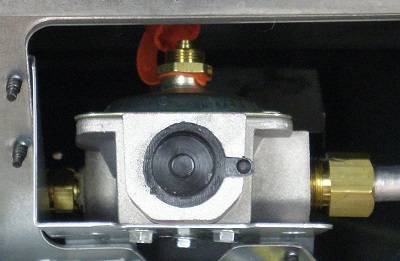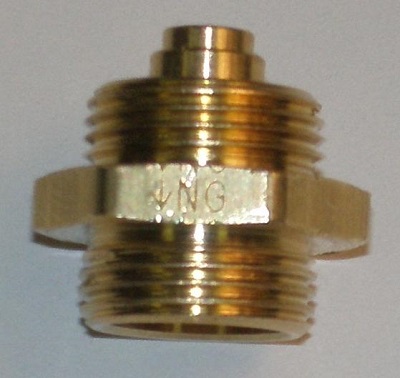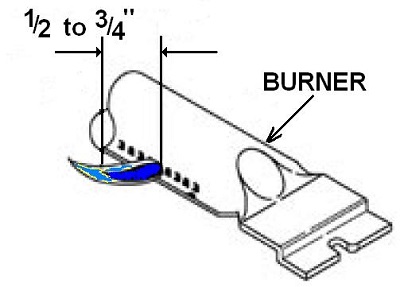
A small amount of odor is normal and will be present when the range is first turned on. If there is a strong odor, the bake and broil assemblies should be inspected.
1. Remove the oven door.
2. Remove the bottom pan.
3. Replace the oven door.
4. Close the oven door and set the oven to BAKE at 350° F. Observe the bake burner flame.
5. Set the control to BROIL and observe the broil burner flame.
6. Allow the oven to cool and reassemble it.
Adjustments require disassembly of the burner section.
To avoid handling hot parts, the oven should be cool.
